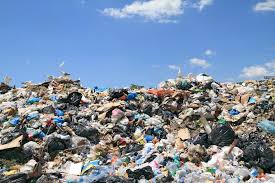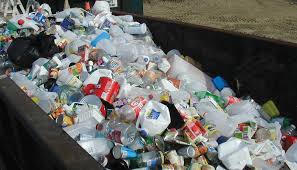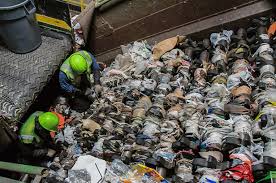Waste recycling contamination refers to the presence of non-recyclable materials or substances in a batch of recyclables. It occurs when items that cannot be processed or reused in the recycling system are mixed with recyclable materials.
This contamination can disrupt the recycling process, increase costs, and reduce the quality of recycled products. In simple terms, it’s like putting the wrong stuff in your recycling bin, which hinders the effectiveness of recycling efforts.
What is Recycling Contamination?
Recycling works when materials like paper, cardboard, glass, and plastic are sorted and processed into new products. But when non-recyclable items end up in the recycling bin, it causes problems. This mix of good and bad stuff is what we call contamination.
Why is Contamination a Problem?
1. Cost: Contaminated materials are costly to sort out. It takes time and money to separate the good from the bad.
2. Environmental Impact: When contaminated materials are processed, it can lead to lower-quality recycled products or even damage recycling equipment.
3. Missed Recycling Opportunities: Contamination can result in entire batches of recycling being sent to landfills instead of being turned into something new.
Common Waste Recycling Contamination Culprits
1. Plastic Bags: They can clog recycling machines. Take them to special drop-off locations or use reusable bags.
2. Food Residue: Containers with food residue are harder to recycle. Rinse them out before tossing them in the bin.
3. Tanglers: Items like hoses, wires, and clothing can tangle up in the machines and cause breakdowns.
4. Hazardous Materials: Batteries, chemicals, and medical waste should never go in the recycling bin. They’re dangerous and can damage recycling facilities.
How Can You Help?
1. Know What’s Recyclable: Check with your local recycling program to learn what items they accept. It varies from place to place.
2. Cleanliness is Key: Rinse containers, so they’re free of food and liquids. It helps keep your recycling clean.
3. Break Down Boxes: Flatten cardboard boxes to save space and make recycling easier.
4. No Plastic Bags: Take them to designated drop-off points or reuse them.
5. Educate Others: Spread the word about recycling contamination to your friends and family.
Recycling is a simple yet powerful way to make a positive impact on our planet. By understanding and avoiding recycling contamination, you’re helping ensure that the recycling process remains effective and efficient.
It’s a small change that can make a big difference in protecting our environment for future generations. So, let’s recycle right and keep our planet clean!.
How Does It Happen?
Recycling is like sorting your stuff into different bins. You have one bin for paper, another for plastic, and so on. Each bin has its own purpose. But sometimes, things that don’t belong there sneak into the wrong bin. It’s like putting a plastic bottle in the paper bin or tossing a dirty pizza box into the recycling.
Recycling contamination happens when things that don’t belong in the recycling bin end up there. It causes confusion, extra work, and even damage. By knowing the rules and being careful about what you recycle, you can help keep the recycling process smooth, just like making a perfect sandwich without unexpected ingredients.
Read Also: Yard Waste Paper Bags Recycling Guide
The Causes of Recycling Contamination and the Control Measures

Recycling contamination is like having a surprise ingredient in your recipe – it’s not what you expected. Here are the main reasons why recycling bins often end up with the wrong stuff:
1. Lack of Awareness: Sometimes, people aren’t sure what can or can’t be recycled in their area. They might toss in items that seem recyclable but actually aren’t.
2. Wishful Recycling: Some folks engage in “wishful recycling,” hoping that an item can be recycled even if it can’t. This stems from good intentions but can lead to contamination.
3. Unclear Labels: Not all products have clear recycling labels, which can confuse people. Without clear instructions, well-meaning recyclers might make mistakes.
4. Convenience Over Accuracy: Recycling right can take a bit of extra effort, like rinsing containers. Some people skip these steps for convenience, causing contamination.
5. Misinformation: Sometimes, people receive incorrect information about what’s recyclable. This misinformation can lead to contamination.
6. Contamination in the Home: If recyclables are stored in the same bin as trash, contamination can occur. Items meant for recycling can get dirty or mixed with non-recyclables.
7. Lack of Access: In some areas, there may be limited access to recycling facilities or information. This can make it challenging for people to recycle properly.
8. Language Barriers: Language differences can lead to misunderstandings about recycling rules. It’s essential to provide information in multiple languages to prevent contamination.
9. Laziness or Oversight: Sometimes, people toss items into the recycling bin without thinking. They may not consider the consequences of contamination.
10. Recycling Bin Placement: Placing recycling bins next to trash bins can lead to accidental mix-ups. Clear separation and labeling can help reduce this problem.
Why Does It Matter?
Contamination might seem like a minor issue, but it has significant consequences. It can increase recycling costs, damage equipment, and reduce the quality of recycled materials. Additionally, it can lead to entire batches of recyclables being sent to landfills instead of being reused.
What Can We Do?
To reduce contamination, it’s crucial to raise awareness about proper recycling practices, provide clear guidelines and labels, and make recycling convenient and accessible for everyone. Education and community efforts can help ensure that we all play a part in keeping recycling clean and effective.
Recycling contamination happens for various reasons, including lack of awareness, wishful recycling, unclear labels, and convenience. Understanding these causes and taking steps to address them can help reduce contamination and improve the recycling process. It’s a collective effort to protect our environment and maximize the benefits of recycling.
Read Also: The Importance of Recycling Bins in Waste Management
How You Can Reduce Recycling Contamination

Recycling contamination can be like a puzzle with missing pieces, but you can be the one who helps put it all together correctly. Here’s how:
1. Learn the Rules: Understand what can and can’t be recycled in your area. Check with your local recycling program or municipality for guidelines.
2. Sort It Right: Separate recyclables from non-recyclables at home. Create different bins for paper, plastic, glass, and trash.
3. Keep It Clean: Rinse out containers before recycling. It’s like washing your dishes after a meal – it keeps things tidy.
4. Check the Labels: Look for recycling symbols and instructions on products. These labels guide you on how to recycle properly.
5. No Wishful Recycling: Avoid the “I hope it’s recyclable” mindset. When in doubt, leave it out of the recycling bin.
6. Educate Others: Share your recycling knowledge with friends and family. The more people know, the cleaner our recycling will be.
7. Say No to Plastic Bags: Plastic bags are like troublemakers in recycling machines. Take them to special drop-off locations or reuse them.
8. No Hazardous Materials: Keep items like batteries, chemicals, and sharp objects out of the recycling bin. They can be dangerous and disrupt the process.
9. Communicate Clearly: If your community has unclear recycling instructions, advocate for better labeling and information.
10. Be Mindful: Pay attention when you’re recycling. Avoid tossing in items on autopilot. It’s like making sure all the puzzle pieces fit.
11. Support Local Efforts: Participate in recycling programs and initiatives in your community. Attend workshops or events to learn more.
12. Encourage Others: Motivate your neighbors and coworkers to recycle correctly. Positive peer pressure can make a big difference.
Remember, reducing waste recycling contamination is like putting together a jigsaw puzzle, each piece matters. By following these simple steps, you can play a vital role in making recycling more efficient, cost-effective, and environmentally friendly. It’s a small effort that leads to a cleaner planet for all of us.
Read Also: The Health Benefits of Using Mexican Seasoning on your Cooking

